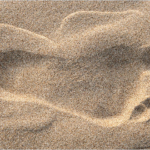How 3D printing can take your pain away
Foot orthotics, those moulded insoles that reduce the stress of injury or genetic misalignment, are wondrous things. Acquiring them, though, can be troublesome. Patients wade through a hard-to-navigate, expensive maze of appointments, fittings and long waits.
Josh O’Kane in Vancouver, The Globe and Mail on May 6, 2015
This baffled Vancouver’s Louis-Victor Jadavji, who was prescribed orthotics after dislocating his knee during a school track meet five years ago. Surely, he thought, the process could be made easier.
He’s betting on it. Last year he co-founded Wiivv Wearables Inc. Customers take photos of their feet and e-mail them in, and Wiivv’s clever software makes orthotics using three-dimensional printing. All for less than $200, with no specialists or appointments required.
Wiivv’s product is not a cure-all. The company strips away much of the biomechanical nuance provided by medical experts and instead delivers an orthotic priced between drugstore insoles and podiatrist-designed pairs costing $500 and more.
“We’re trying to bring that level of access, where you’re not needing to go to a practitioner of any sort,” says 22-year-old Mr. Jadavji, sitting at Wiivv’s office in the Marine Building, overlooking Vancouver’s harbour.
After moving to California for college – where he began 3D printing car parts – Mr. Jadavji met an entrepreneur named Shamil Hargovan. They saw a business opportunity in Mr. Jadavji’s painful knee ailment.
He and Mr. Hargovan, who previously worked at Hewlett-Packard Co., founded Wiivv last year. Mr. Jadavji returned to Vancouver and opened an office there. The company also has offices in San Diego and Palo Alto, Calif., with 13 employees between them.
Customers take two pictures of each foot against an 81/2 by 11 sheet of paper for scale. Then Wiivv’s proprietary customization engine – it’s the company’s bread and butter – processes them into a 3D-printing-ready file. The file is sent to Mississauga, where a printing machine can make as many as 35 pairs a day out of a polymer.
Historically, custom orthotics have been made from a cast, either from a digital scan or a physical imprint, such as in plaster-of-Paris, then digitally designed and cut with special machines.
Read More in The Globe and Mail







